Solar-Powered Ultrasonic 4-Pack Outdoor Animal Repellers
$72.99
If you’ve been tending your garden and wish you could simply enjoy your flowers and veggies, without unwelcome visits from rabbits, squirrels, raccoons, or deer; this 4‑Pack Ultrasonic Solar Animal Repeller might be just the friendly helper you need. These little green guardians stake happily into your soil, soak up sunshine, and spring to life at the first twitch of motion; gently startling wildlife with a soft red flash and subtle ultrasonic buzz that nudges them away, without mess or harm.
Description
If you have ever wandered out to find your garden ravaged by rabbits, raccoons, or a persistent neighborhood cat, the Solar-Powered Ultrasonic 4-Pack Outdoor Animal Repellers can be a natural and caring solution. These solar-powered sensors combine motion detection, ultrasonic sound, and flashing LED light to gently nudge wildlife and unwanted critters away. No traps, no poisons, just simple protection for your plants, pets, and peace of mind.
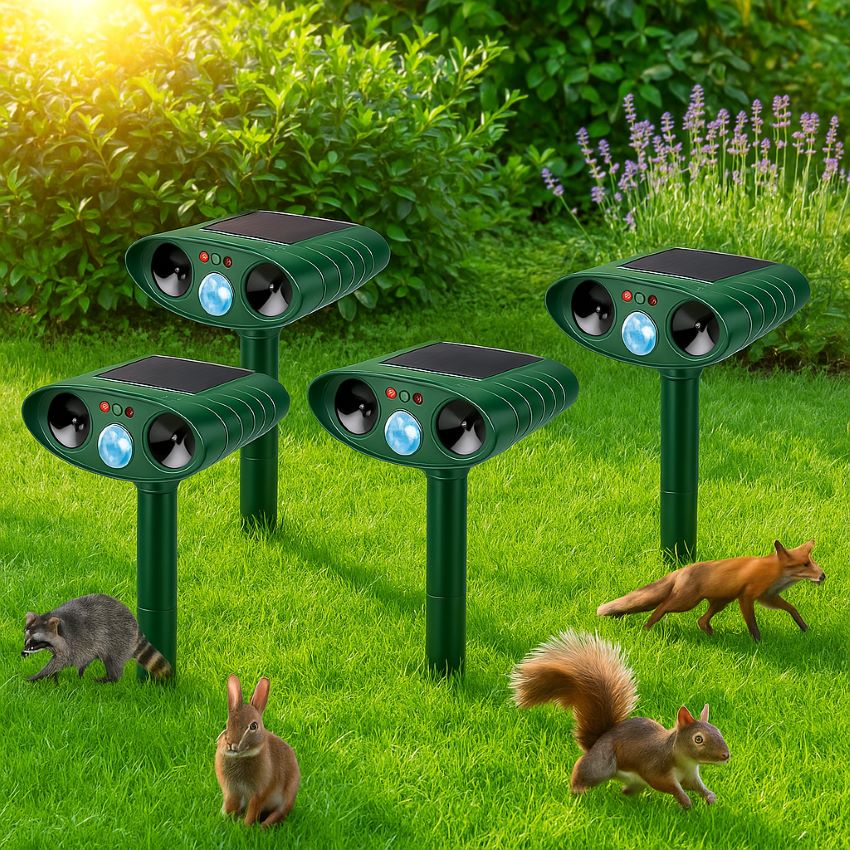
Key Customer Benefits
- Guards your garden quietly, with no chemicals. Imagine waking to fresh blossoms intact. These repellers drive off deer, rabbits, raccoons, squirrels, and curious neighborhood cats or dogs, using harmless ultrasonic pulses and flashing light. No poisons or traps required.
- Born to work in the sun. The solar panels charge daily and power the unit automatically. No cords, no power bills, no hassle. Perfect if you just want to set them and forget them.
- Fast, wide-angle detection. The built-in PIR motion sensor covers up to 30 ft and around a 110 degree arc so stray critters are spotted early and gently nudged away before they reach your prized roses.
- Scares animals without hurting them. Ultrasonic vibrations and strobe-like red LED bursts startle animals enough to leave, but cause no pain or lasting harm. They simply learn that your garden is not party central anymore.
- Built for weather and rough terrain. Most models boast IP65 style weatherproofing. Rain, sun, or wind, the units keep going so long as the solar panel gets daylight.
- Quick install, low maintenance. Stake each into the ground, tilt toward the area you want to protect, and make sure the solar panel is not shaded. That is it. No wiring, no tuning, no second guessing.
- More restful outdoor time. Fewer nibbled plants, fewer surprises in the evening. Just calm enjoyment of your space, knowing small intruders are gently deterred before dinner time.
Product Description
When I first discovered the 4 Pack Ultrasonic Solar Animal Repeller, I was just fed up with squirrels ruining my seedling rows and raccoons trampling through my vegetable patch at night. These slender, solar-charged sensors promised a peaceful, chemical-free solution, and after giving them a fair shake, I came away with a deep appreciation for how they blend design, empathy, and practicality.
These devices are compact, solar-powered units mounted on stakes. Each one combines a PIR motion detector, an ultrasonic speaker, and a flashing red LED light. When a critter wanders within their 25 to 30 foot detection radius and roughly a 110 degree field, they spring to life, quietly at first with a strobe flash and then a brief ultrasonic pulse designed to startle but not harm. That little burst is enough to send most deer, rabbits, squirrels, and raccoons retreating before they dig, munch, or scratch.
What sets this system apart is the thoughtful engineering: its solar panel charges internal batteries during the day so the device runs automatically at dusk and overnight. No wires. No electricity bills. Ultimately, that means you set them, guard your garden, and they quietly go to work even when you are off riding or mucking out.
When I first tried them, I planted two units around the edge of my pumpkin patch. At first the squirrels skirted around, but by night two, I noticed paw prints that had not been, and by morning four, they had stopped visiting entirely. According to a survey shared on Thanos Home’s gardening forum, one user said after six months of running a similar solar-repeller setup, No more critters digging up my lettuce. Some folks noted that the strobe light actually seemed more effective than the sound alone. Critters can learn the sound, but the flash is unexpected enough to keep them wary.
At the same time, I did not ignore the skepticism. Regulators like the US FTC have warned manufacturers that claims must be supported by strong scientific evidence. Several university studies, such as one from Kansas State University, found ultrasonic repellents delivered less than 20 percent effectiveness in lab trials and often pests quickly habituated to the frequency. Additionally, environmental experts like InterNACHI and McGill University’s outreach have noted that real-world performance is usually poor without combining other tactics like sealing entry points and removing food sources.
So why do I still trust and recommend this repeller option? Because in real gardens, not controlled studies, many users follow a blended strategy: set up these solar units thoughtfully, plant and maintain healthy biodiversity, and keep bird feeders and pet food away from the edges. That multi-tool approach seems to yield success stories more often than not.
As someone who truly cares about humane animal welfare, I love that these devices do not hurt pets or wildlife; they simply nudge them away. I also take care to position them where they will not disturb neighborhood pets. While cats and dogs can hear ultrasonic ranges, many users report they do not seem distressed, especially if you avoid placing units near sleeping or resting areas.
In short, what this 4 pack delivers is a low-stress, hands-off deterrent that fits into a broader humane pest strategy. With smart placement, daylight charging, and combined garden care, these devices can protect your blooms, veggies, and outdoor peace of mind without harming curious wildlife or your beloved farm animals.
Product Specifications
| Feature | Specification |
|---|---|
| Quantity | 4 units per package |
| Material | Durable weather-safe ABS plastic |
| PIR Motion Detection | Approximately 110 degree field of view, detection range up to 25 to 30 feet (size-dependent) |
| Coverage Area | Approx. 2,425 square feet per unit, around 9,700 square feet total |
| Ultrasonic Frequency | Typically adjustable from around 25 kHz to 61 kHz; some models include modes from 15 to 65 kHz with alarms or strobe |
| LED Flash and Alarm | Flashing red LED and optional buzzer depending on mode |
| Power Source | Solar panel with built-in rechargeable Ni-MH or AA batteries; some units support USB recharge |
| Waterproof Rating | IPX4 to IP44 splash-resistant (some variants claim IP65 or IP67) |
| Dimensions (each) | Approx. 16 inches tall with stake by 4 to 6 inches wide (varies by model) |
| Battery Capacity | Around 1,200 mAh (18650 or AA Ni-MH cells), about 300 mAh in some versions |
| Operating Modes | 3 to 6 selectable modes: variable frequency ranges, alarm-only, or LED flashes |
| Targeted Animals | Deer, raccoon, rabbit, squirrel, cat, dog, skunk, bird, rodent, etc. |
| Safety and Certifications | Humane pet-safe design; silent to humans; no lethal force |
How to Use / Application Guide
Choosing the Spot and First Charge
- Find sunshine, not shade. Pick a location where the solar panel will bask in 6 to 8 hours of direct sunlight daily. Even leafy movement matters; trees, shrubs, and walls casting shade can limit charging and shorten active hours.
- Charge before first use. Let the unit soak in solar power for a full day, or plug in via USB for 6 hours if clouds persist, to ensure the battery is topped up.
- Wait for the light indicator. If the charge light stops flashing, you are fully powered and ready to go.
Assembly and Installation
- Build the stake structure. Fit the two stake parts together using the connectors, then insert it securely into the ground. Aim for about 20 cm (8 inches) of the device above the soil so it will not wobble.
- Orient the repeller thoughtfully. The PIR motion sensor should face the spot most prone to wildlife visits, along fence lines, garden edges, or near compost bins. Do not block or shade sensors or solar panels.
- Install gently, no pressure above the solar panel. Pressing on top can damage it.
Turning It On and Selecting Modes
- Power on by pressing the button until you hear the audible beep. That wakes the PIR and puts it in standby when idle.
- Choose your mode. Many models offer multiple gears; some sweep frequencies, others include flashing LED only. For example:
- Low frequency (13 to 20 kHz) for mice or rabbits
- Mid frequency (19 to 28 kHz) ideal for cats or raccoons
- Full-spectrum sweep plus strobe to discourage a broader range of critters
- Adjust sensitivity. A dial, sometimes labeled “sens,” lets you control how far the PIR detects. More is louder and farther reach. Less can help avoid capturing passing pets or people.
Day to Day Usage and Best Practices
- These repellers do not cast miracles. They take time to work. Expect gradual results over days or weeks as critters learn this spot is not safe or comfortable.
- Keep it clean. Wipe the solar panel weekly with a damp, lint-free cloth. Clean windows get more light, and better light means stronger operation.
- Rotate or tweak settings. Very observant users worry about animals adapting, so every week or two, switch frequency mode or move the unit slightly. That unpredictability keeps the deterrent fresh.
- Mind nearby pets or non targets. Anecdotes in gardening forums mention a neighbor’s dog becoming uneasy when placed nearby. Just point the unit away from play areas or resting spots.
- Winter care. In freezing weather or long gray days, fully charge the device, switch it off, and store indoors. That keeps the rechargeable battery happy.
Insight from Gardeners Like You
Gardeners in forums shared experiences that feel like advice from a fellow caretaker:
“Between ultrasonic sound and the flashing light, works like a charm”, where using both together appeared more effective than sound alone.
“My unit has a battery reserve that lasts several cloudy days,” but extended dull weather may mean some occasional USB boost.
“Rotating the location every two weeks prevents animals from getting used to it. The unpredictability seems to help!”
FAQs
1. Do ultrasonic animal repellers actually work?
In real-world conditions, results vary. A user on the Thanos Home forum notes:
“Well, there is no solid scientific evidence. It seems to be a hit or miss.”
Scientific reviews reinforce this. Kansas State University and The Spruce report inconsistent outcomes. Some pests avoid the device briefly, but many adapt quickly, and ultrasonic waves do not travel far or through barriers reliably.
2. Are ultrasonic repellers safe for pets or neighbors?
Generally, yes. The frequencies (25 to 61 kHz) are above human hearing and mostly above what many pets hear, though some sensitive animals like young dogs, cats, or rodents may sense discomfort. Still, forum users report pets avoiding the yard altogether after repellers were installed.
Tip: Observe your pets. If they show signs of anxiety or start avoiding certain spots, try repositioning the device or reducing its range.
3. How long does it take to see results?
Users and product manuals alike suggest expecting at least 1 to 2 weeks, sometimes longer, before noticing changes. Throughout this adaptation window, critters learn the area is uncomfortable and look elsewhere. Switching modes or moving units periodically can help prevent habituation.
4. What factors influence its effectiveness?
Several variables play a role:
- Physical barriers, such as walls, plants, or debris, can block ultrasonic waves, significantly reducing reach.
- Environment; rain, high humidity, or dust may degrade signal strength.
- Animal type; not all pests respond equally. Some rodents or insects may ignore the frequencies entirely.
Best practice: Place devices in open, unobstructed areas and combine with scent barriers or visual deterrents for better overall impact.
5. Can pests eventually ignore the repeller?
Yes, habituation is a common problem. Research and reviewers highlight that many animals adjust to the sound over time, especially if it remains constant. Some manufacturers counter this with sweep frequencies or alternating modes to keep the signal unpredictable.
6. Is there a more reliable approach to pest control?
Absolutely. Experts widely recommend integrated, layered strategies over reliance on any single device:
- Fix entry points with caulk, steel wool, or mesh to seal openings.
- Remove attractants by securing compost, pet food, and eliminating water sources.
- Add visual deterrents such as motion-activated sprinklers or lights to complement ultrasonic devices for greater surprise.
The Spruce and Southern Living both stress combining ultrasonic repellers with traditional tools for best results.
Final Thoughts
If you are nurturing your garden and cultivating peace with wildlife, the 4 Pack Ultrasonic Solar Animal Repeller can be a thoughtful, eco-conscious addition, especially when paired with a little patience and compassion.
Why It’s Worth Considering
- Humane and eco-friendly. These solar-powered units use motion-activated ultrasound and LED flashes to gently persuade deer, raccoons, rabbits, and squirrels to look elsewhere. No traps, no poisons, just a push outside their comfort zone. They are powered by sunshine, meaning no batteries or cords, and they work silently and non-invasively.
- Convenient and low-maintenance. Once installed, you can mostly forget about them until it is time to clean the solar panel or rotate the placement to keep things fresh.
What the Research Tells Us
- Scientific findings are mixed. Some controlled studies show low effectiveness, like one study finding less than 20 percent repellency against ticks, highlighting the limitations of ultrasonic methods when used alone.
- Outdoor use offers more success. Real-world application often yields better results than lab settings. Outdoor units enjoy space to project sound and light, and many users notice noticeable declines in nuisance visits after consistent use.
A Balanced Approach, Your Best Bet
To make the most of these repellers, think of them as one gentle tool in your pest-management toolkit:
- Combine carefully. Add them to your garden guard’s toolbox; seal up hiding spots, eliminate food attractants like fallen fruit or pet kibble, and consider visual additions like reflective tape or motion-triggered sprinklers.
- Keep it unpredictable. Animals learn patterns, so periodically switching the mode or position of your units keeps things intriguing and effective.
- Check on your companions. Monitor how pets and neighbors respond. The sounds are above human hearing, yet young pets or those with sensitive hearing may show mild signs of discomfort, so just fine-tune for harmony.
| What Matters | Best Practice |
|---|---|
| Effectiveness | Varies, often more effective outdoors when paired with other methods |
| Humane use | Promotes gentle deterrence without harm |
| Best application | Rotate modes or positions, combine with good garden care |
| Notes of caution | Pets or sensitive neighbors might notice high tones |
If your heart leans toward a gentle, sustainable way to safeguard your plants, and you are ready to marry smart installation with nature-minded strategies, these solar ultrasonic repellers are more than just gadgets. They are companions in humane stewardship.
Related products
-
Sale!
Solar Predator Eyes 2 Pack, Motion Activated Animal Deterrent for Coops and Yards
$19.97Original price was: $19.97.$17.97Current price is: $17.97. Buy Now -
Ready-to-Use Liquid Fence Dog & Cat Repellent for Yard
$16.76 Buy Now -
Nature’s MACE 6 lb Pet-Safe Dog Repellent Granules
$38.97 Buy Now -
OFFO Black Stainless Steel Bird 10 Feet Spikes for Pigeons
$32.99 Buy Now
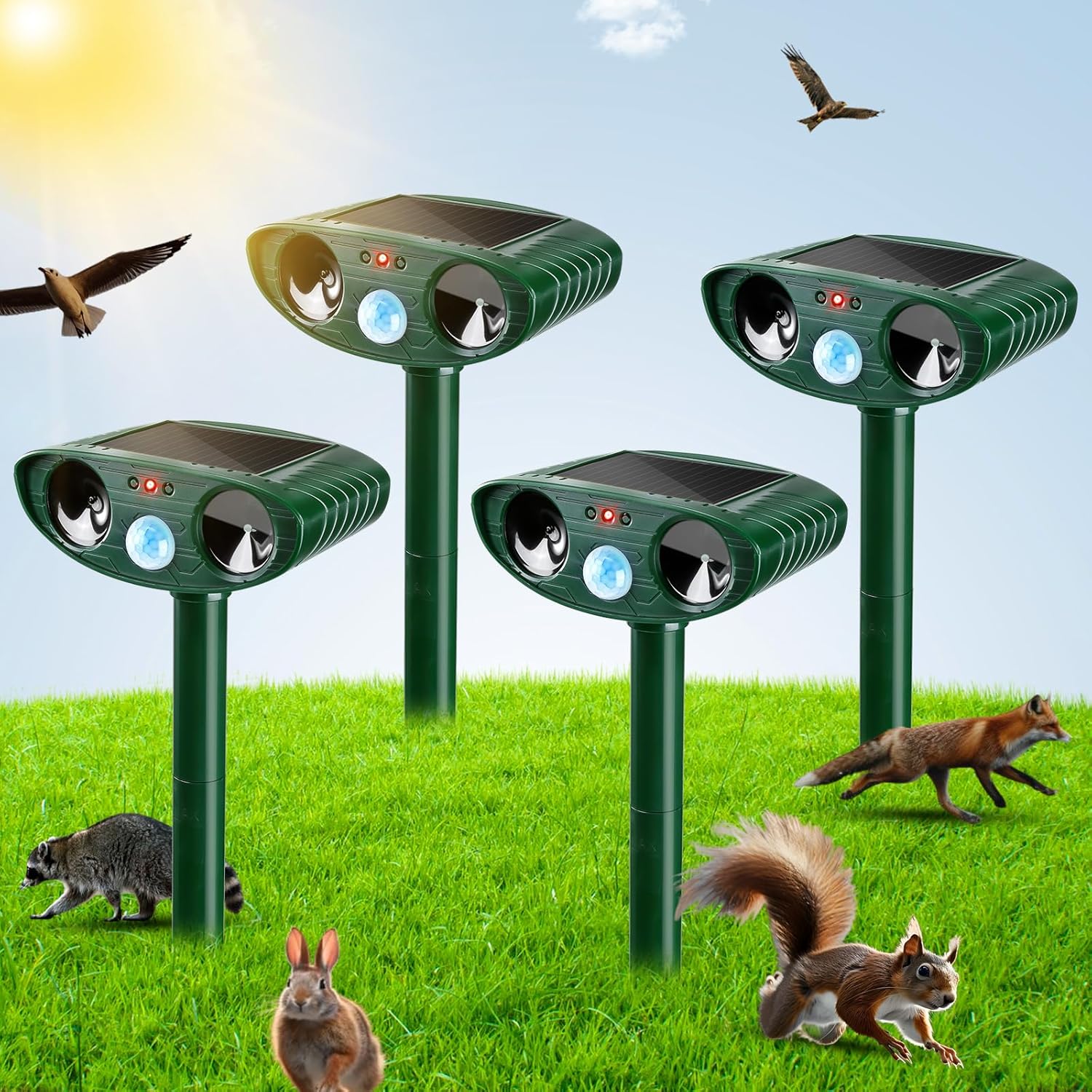
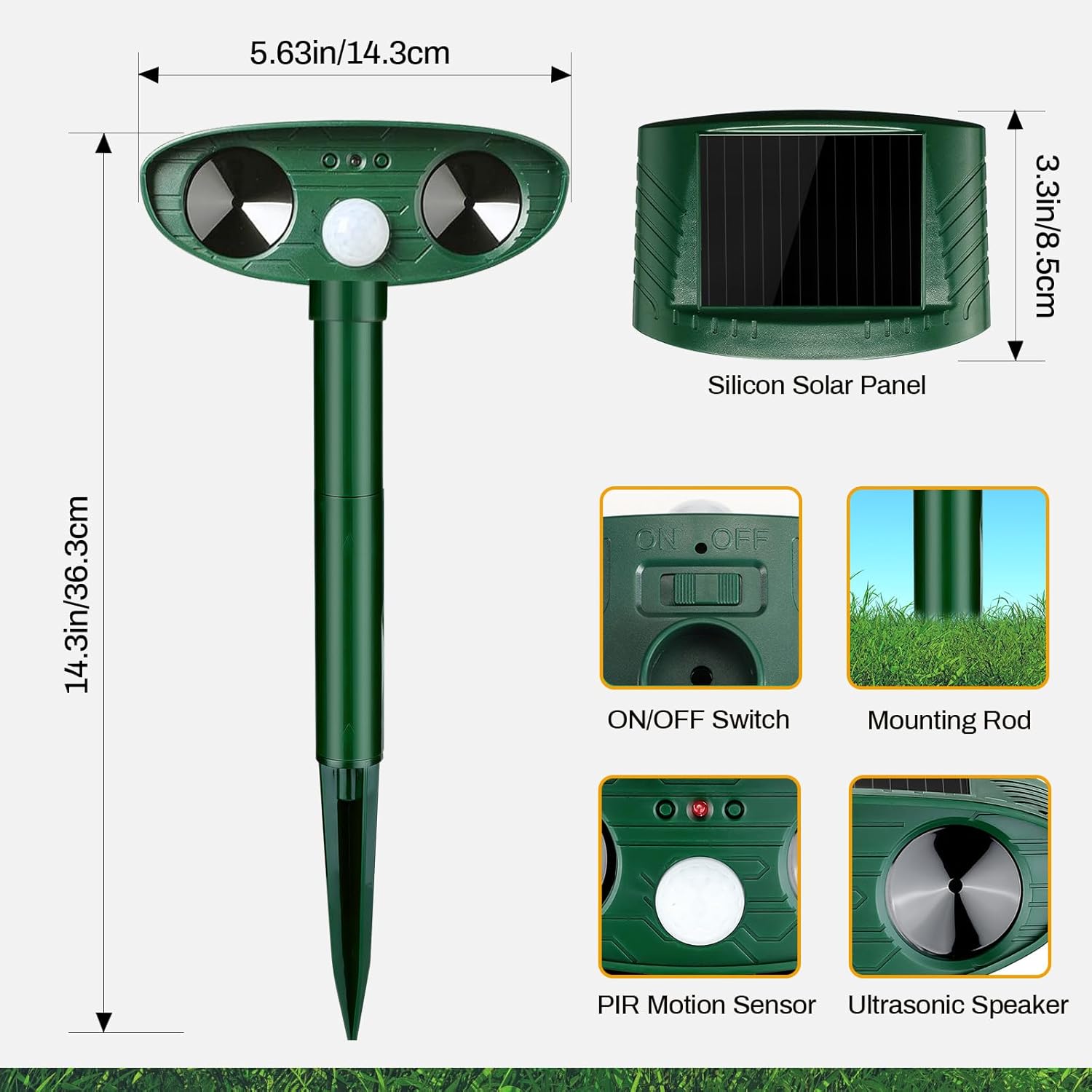
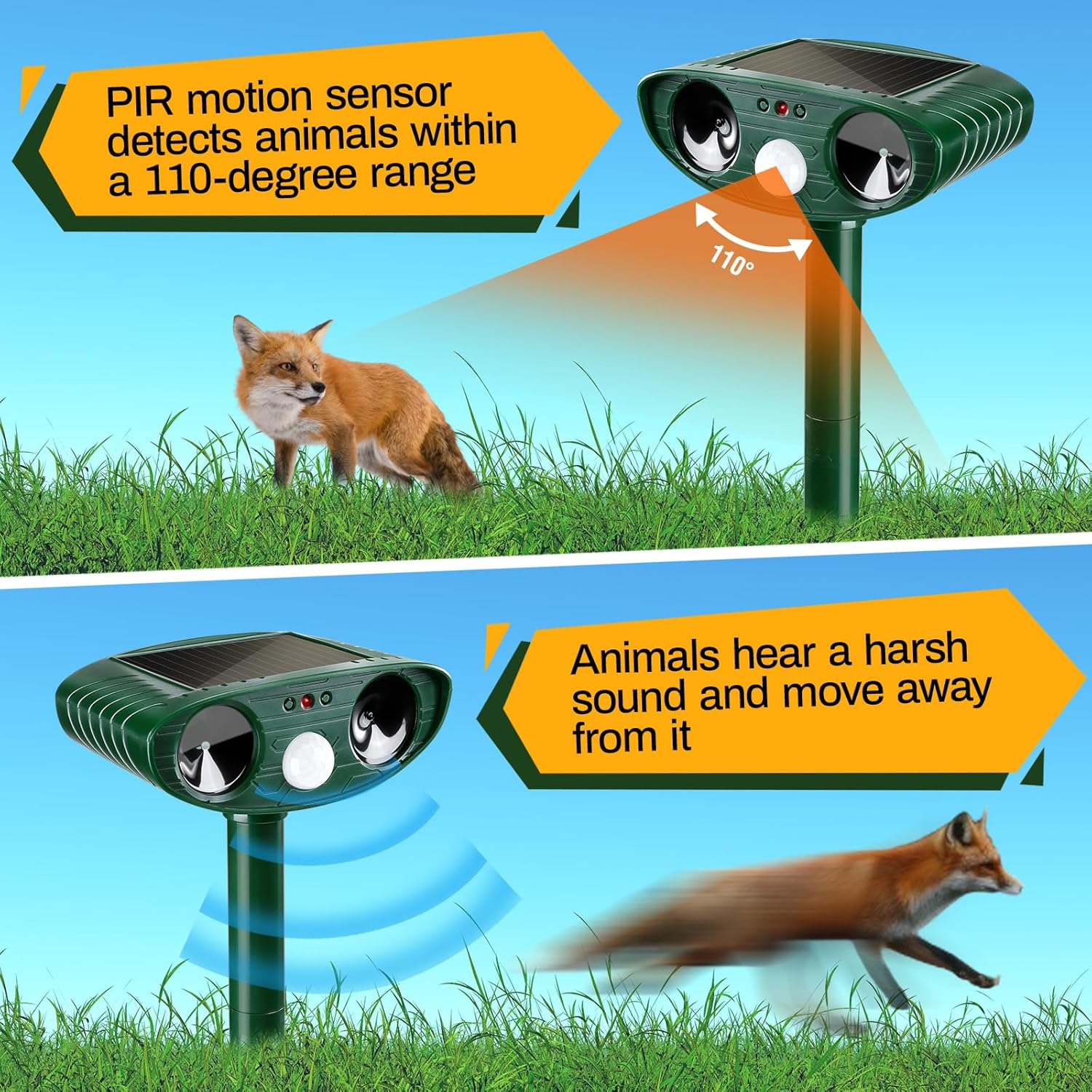
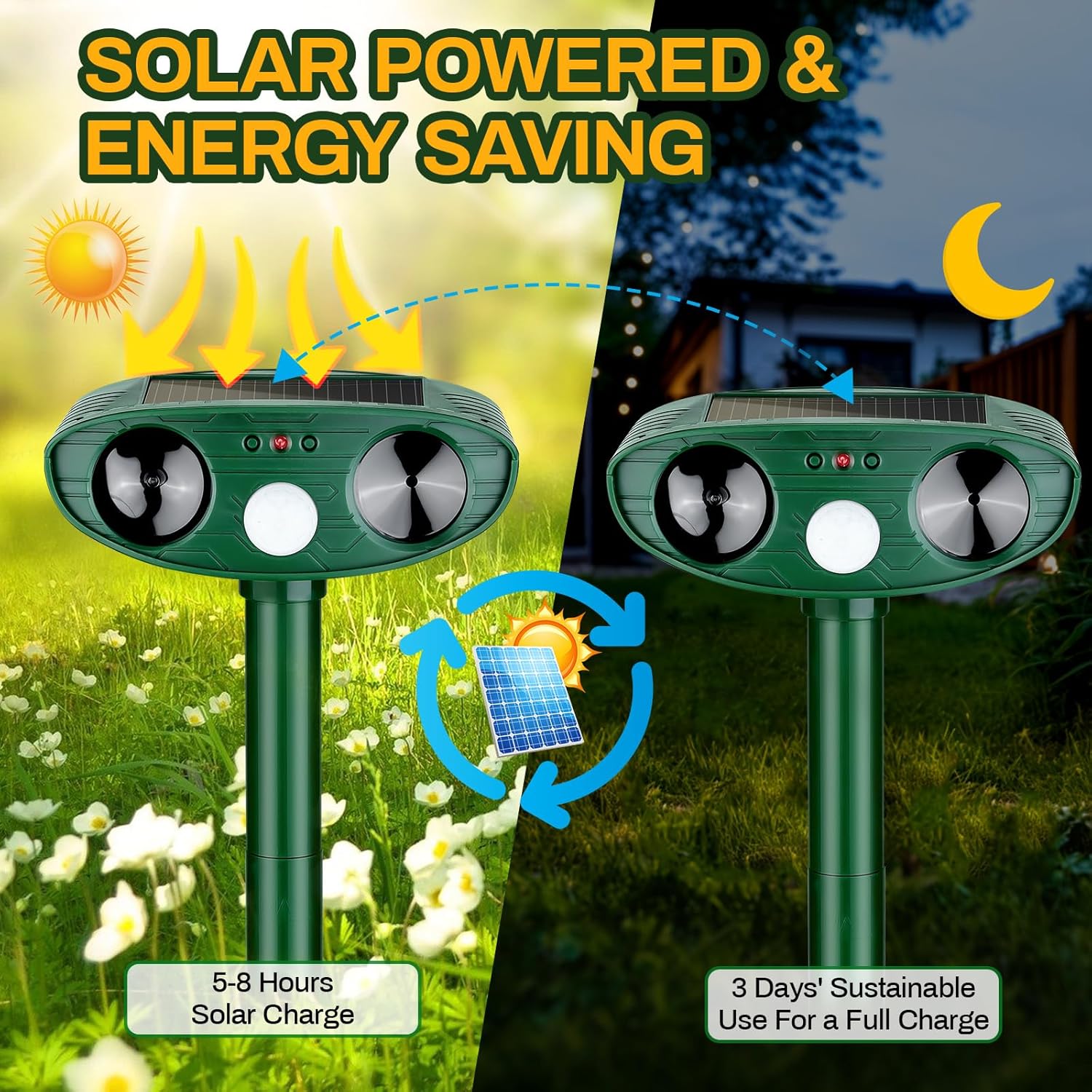

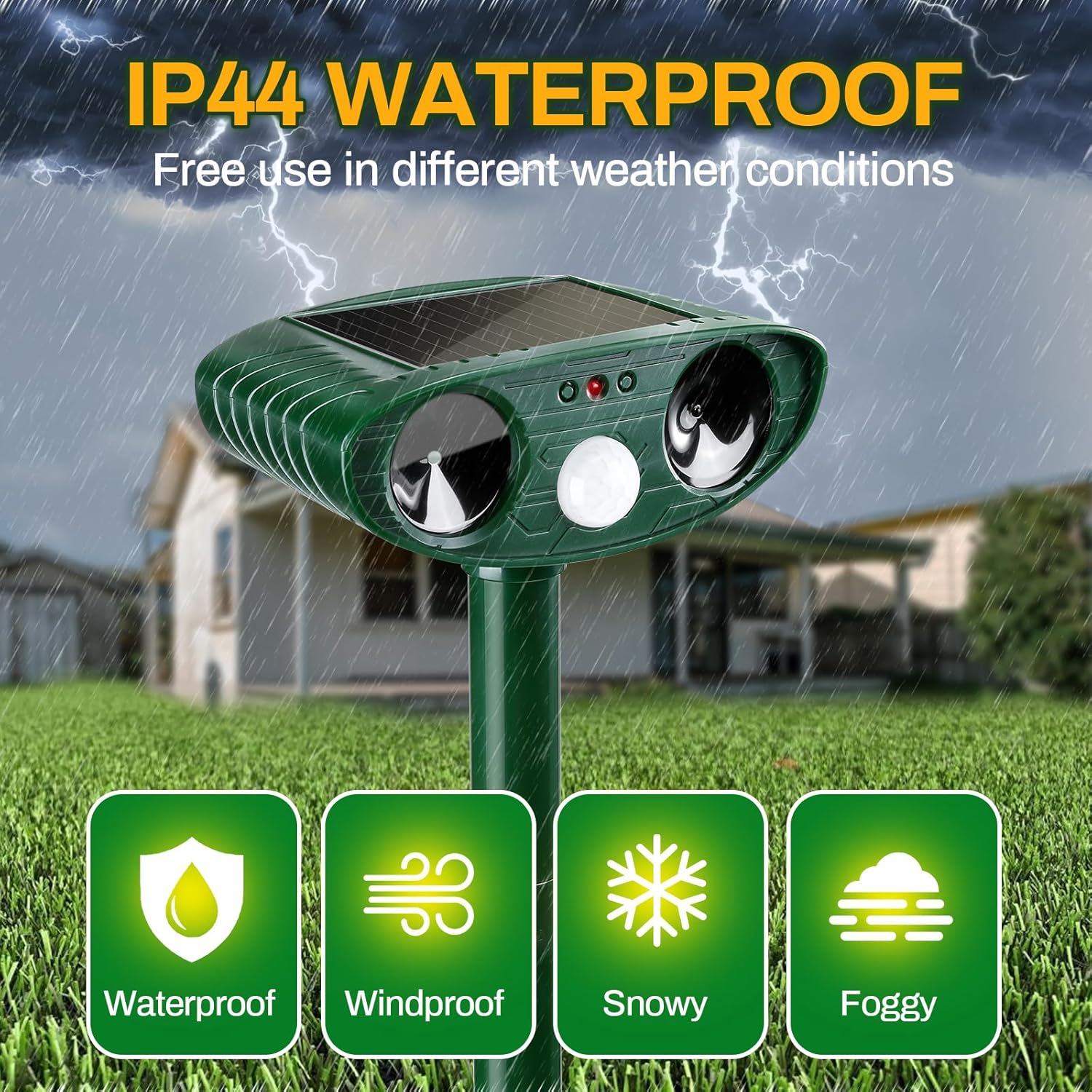
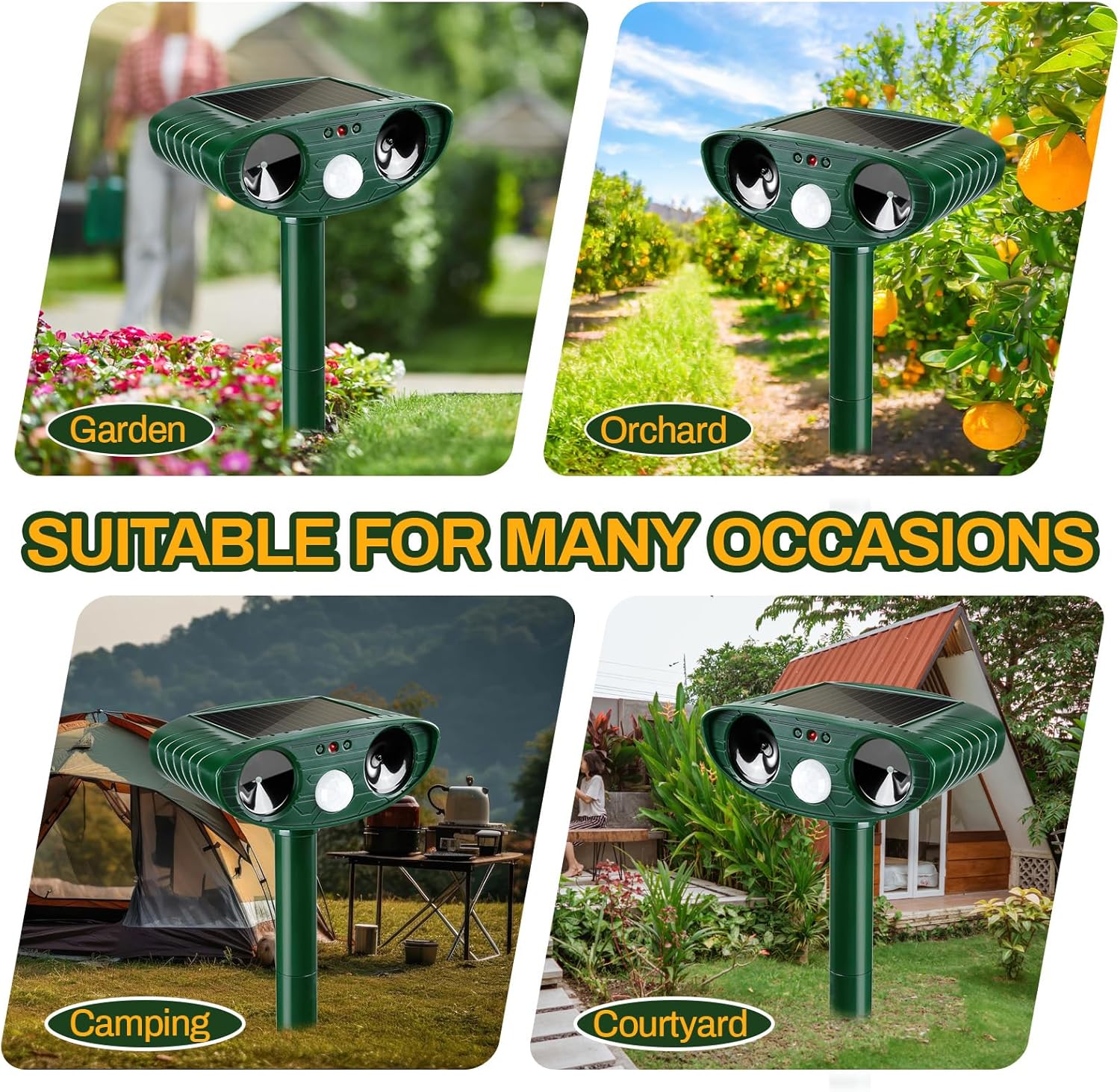
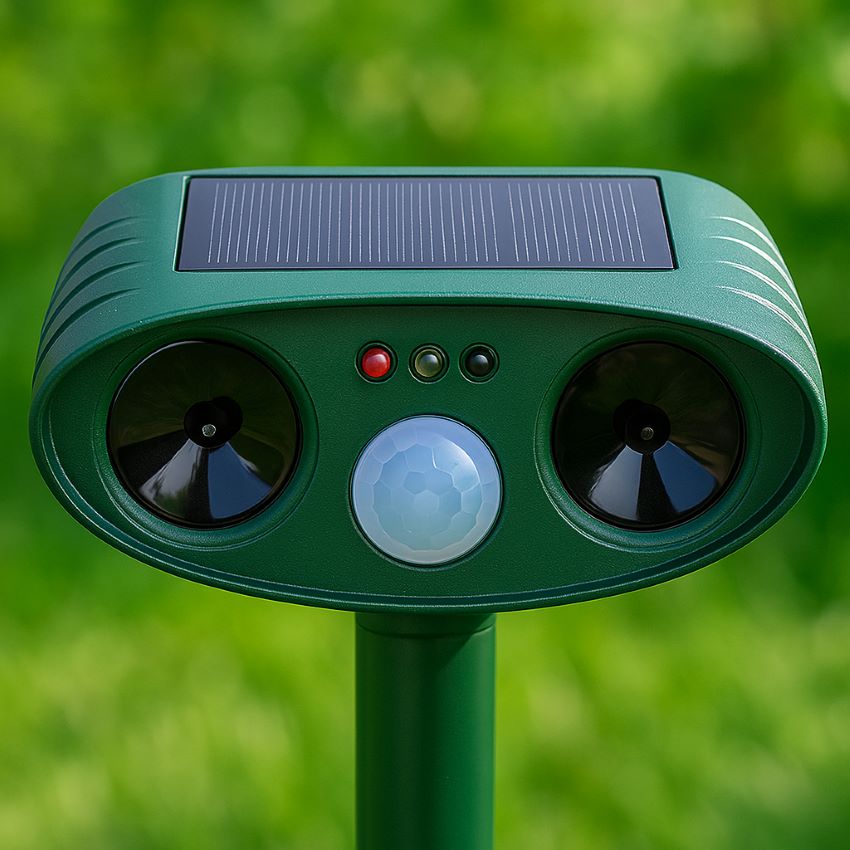

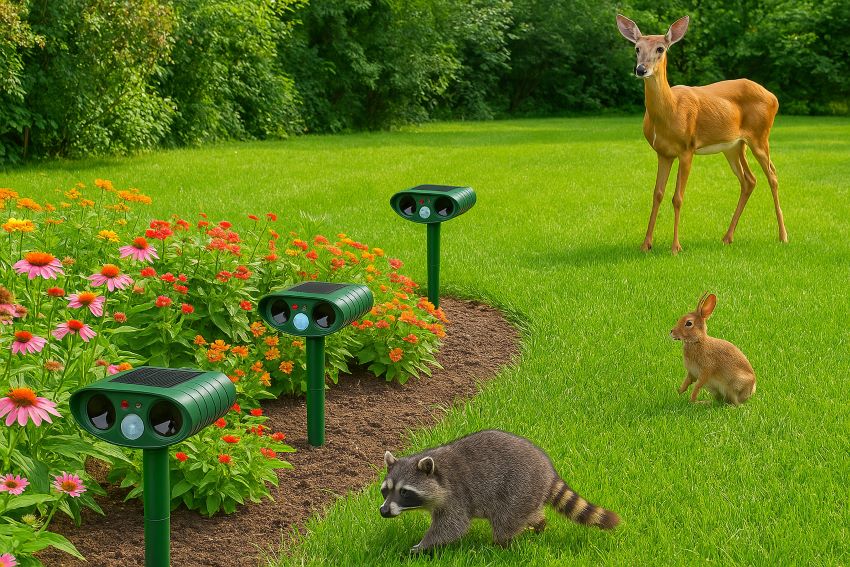
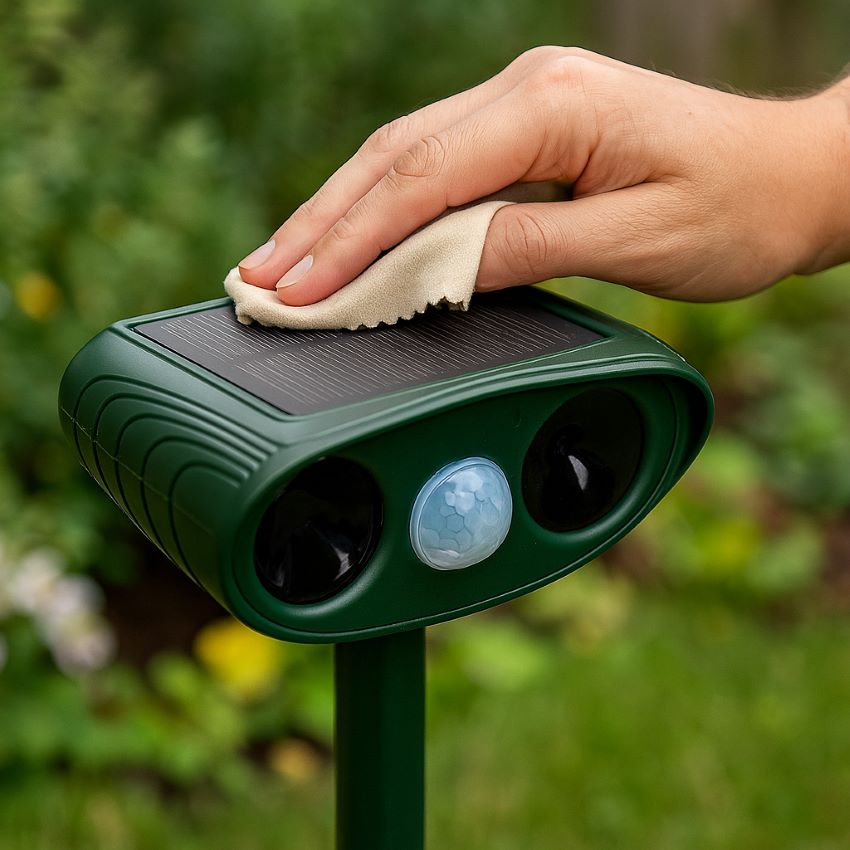
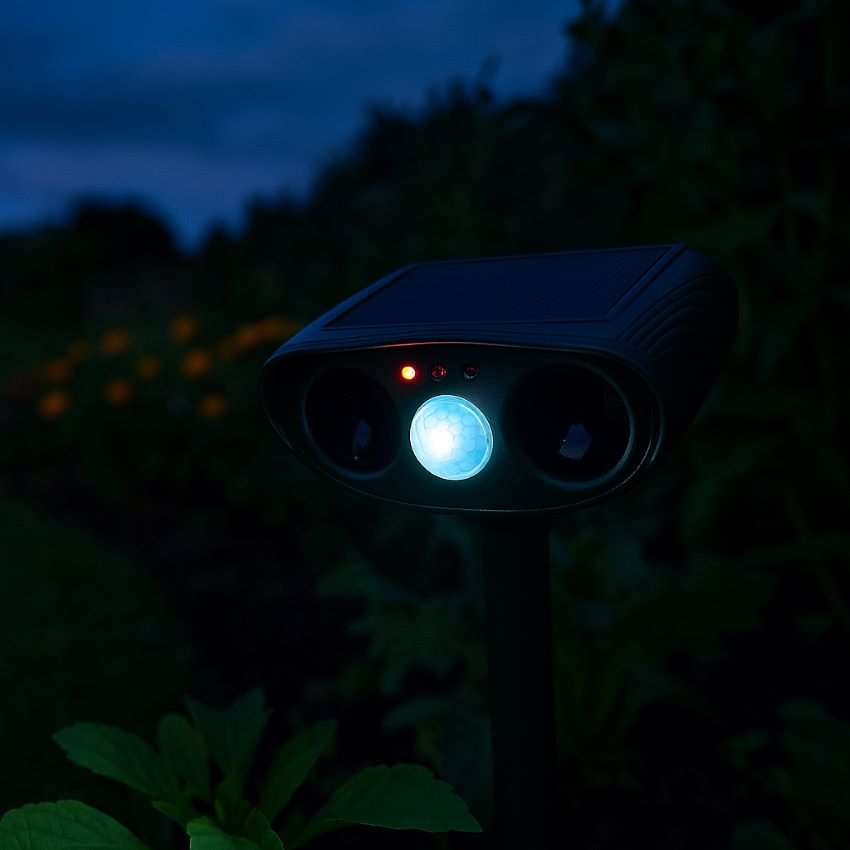
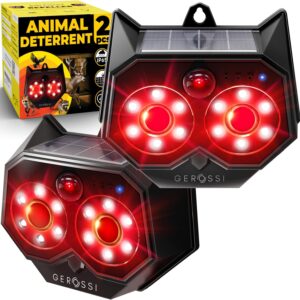


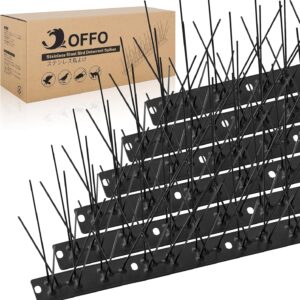
Reviews
There are no reviews yet.